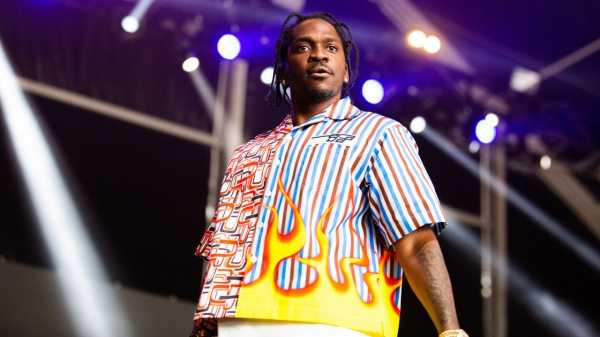
The fashion world orbits in such a way that autumn sometimes starts in July. A short-sleeved Prada lounge shirt that has recently attracted the rubbernecked gaze of menswear enthusiasts was among the wares that the luxury house introduced for its fall-winter collection, in January, in Milan, in a warehouse decorated to convey luxurious bleakness. Emerging into the wild on the backs of Instagram celebrities, and also actual celebrities, including hip-hop’s Pusha T and Hollywood’s Jeff Goldblum, the shirt is a flamboyant exemplar of several trends. It belongs not to any one season but to a years-long period of decadence characterized by the parallel trends of street-stylish elegance and proudly obstinate ugliness.
The garment is a short-sleeved button-front shirt, of the cheerful sort recently in vogue. The fashion dude on the new “Queer Eye,” Tan France, is a de-facto spokesman for a movement toward patterns iterating whimsical motifs: flowers, tropical fruit, exotic birds, playful crustaceans, island scenes, kaleidoscopic abstractions, and so on, well beyond such standard insignia as preppy sailboats and go-to-hell aquatic mammals and timeworn Tiki-culture Polynesian danseuses.
It is a cotton lounge shirt, with a camp collar and a straight hem. In its hyperactive assembly of disparate patterns, it seems Frankensteined, slightly like an oxford-cloth “fun shirt.” The right half of the shirt, with its colors evoking ripe oranges and chilled melons, revives an interlocking U-print graphic from the fall of 1996. The left side, striped in white, pool blue, and loamy brown, harkens back to a design from the spring of that same year, with the difference that the hem of this striped half is graphically engulfed in the flames of another print, so that it recalls the hood of a gaudy hot rod.
At the left breast, above the pocket, there is a logo badge rendered in typography reminiscent of current streetwear, with the Prada letters arranged as if the brand had diversified into parcel delivery or supply-chain management. The badge helps the asymmetrical shirt maintain its precarious visual balance, and it emphasizes the shirt’s “boxy fit,” the maker adds, on its Web site, in a sideways sizing note advertising the roomy cool of the cut. The same blurb asks us to understand that these archival prints have been reintroduced “in a contemporary key.”
The eye knows that key to be dissonant. It seems possible that the flames on the shirt combusted when the dramatic pattern contrast provoked a violent chemical reaction. The shirt resembles an elevated version of an embarrassment perpetrated by one’s father at a backyard barbecue. Its ugliness is impudent. The flames might have leaped to the print from a shirt owned by a driver whose rear window features a decal of a urinating cartoon character, or from the uniform of a bygone bowling team. The shirt is contemporary in the post-normcore way of high-end fanny packs and opulently shapeless dresses.
The shirt’s retail price of twelve hundred dollars is, even by the preposterous standards of the luxury market, bananas. You can get a silk Gucci bowling shirt, of a similar cut, with a floral pattern placing extravagant orchids and shimmering beetles against a field of olive, for a mere eighty dollars more. On the other hand, the Prada shirt exists alongside another, made of nylon gabardine and printed with banana clusters, priced at $1,790. It requires great resources—adamant confidence, foremost—to indulge in the performance art of getting oneself dressed at this level, to leave the house in a shirt that most of us could wear nowhere at all.
Sourse: newyorker.com






